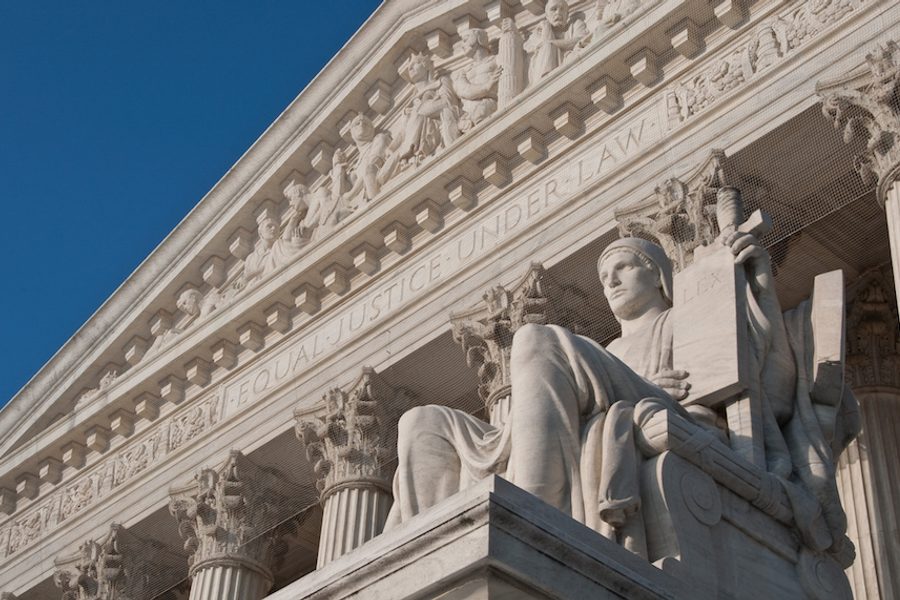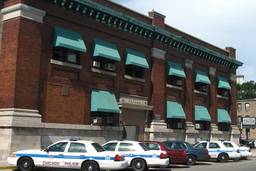A Guide to ‘Friedrichs,’ the SCOTUS Case That Could Decimate Public Sector Unions
Ben Rosenfield

The Supreme Court began hearing arguments today in Friedrichs v. California Teachers Association. The plaintiff, California teacher Rebecca Friedrichs, and the organizations on the Right that are behind her are arguing that public sector employers violate individuals’ First Amendment rights by compelling employees to pay union fees. The case could in effect force all public sector unions to operate under “right-to-work” rules and decimate public sector union membership — bad news for an already battered American labor movement.
In These Times has covered the case closely since its beginning. Here, we’ve rounded up some of our articles on the case and its implications for U.S. unions.
Friedrichs aims to overturn a nearly 40-year precedent, established in the 1977 Abood v. Detroit Board of Education case, which allows for the use of “fair share” fees for public sector unions. Labor attorney Moshe Marvit argues that this case threatens public sector unions and could cost them millions of dollars, thousands of members and what remains of their institutional power.
Shaun Richman argues that unions could use the Right’s argument in the case and turn it on its head: Since the case interprets contracts as political, unionized workers are compelled, by the government, to represent workers who disagree with them, thus violating their First amendment rights.
Taking stock of the rising threat in both the private and public sectors, Richman also argues that the labor movement needs an equally bold response. He explains the potential upside (and pitfalls) to “members-only” unions, which Friedrichs would impose on the public sector.
Although labor supporters fear that an unfavorable ruling in Friedrichs would have the effect of passing a national right-to-work law for all public employees and permit some workers to become “free riders” who use union resources for representation but don’t pay for that representation, some evidence suggests the Supreme Court may not rule against unions in this case. And even if they do, it won’t mean the end of the labor movement, David Moberg writes.
Another case, Bain v. California Teachers Association raises similar questions and points as Friedrichs. The case was eventually thrown out, but Moshe Marvit lays out the right-wing arguments underlying these cases, put forward by anti-union groups such as StudentsFirst and the Center for Individual Rights.
A ruling against unions in Friedrichs could force unions towards a more radical, rank-and-file, social movement unionism, including organizing and grassroots activism some would like to see more of in the labor movement today. Unions might have to become more bottom-up, radical and democratic in order to survive, writes Ari Paul.
Samantha Winslow explains how unions are preparing for Friedrichs, including membership drives, attempts at rebuilding unions, and organizing models and solidarity with other public sector unions. “Recommitment drives” are also part of the preparation for what may be to come in the wake of an anti-union decision.
By looking back to an earlier period of the labor movement, there is proof that public sector workers have organized and mobilized even without the legal rights to do so. Samantha Winslow says that while Friedrichs could deal a blow to unions and precedents which workers fought to earn, workers have demonstrated that adversity has also served as a catalyst for organization.
In the face of Friedrichs, social movement unionism and connecting at-large union membership with advocacy and legislative campaigns is key, according to Shaun Richman. He proposes that unions fight for meaningful job protections for all workers in a state, not just unionized workers, writing that it could be called the “right to your job” law.
After a day of oral arguments, Moshe Marvit argues that the plaintiff’s arguments in Friedrichs strongly reflect our post-Citizens United world.
Things are looking bad for unions at the Supreme Court. What should labor’s response be? Shaun Richman says it has to include workers’ most powerful weapon: the strike.





